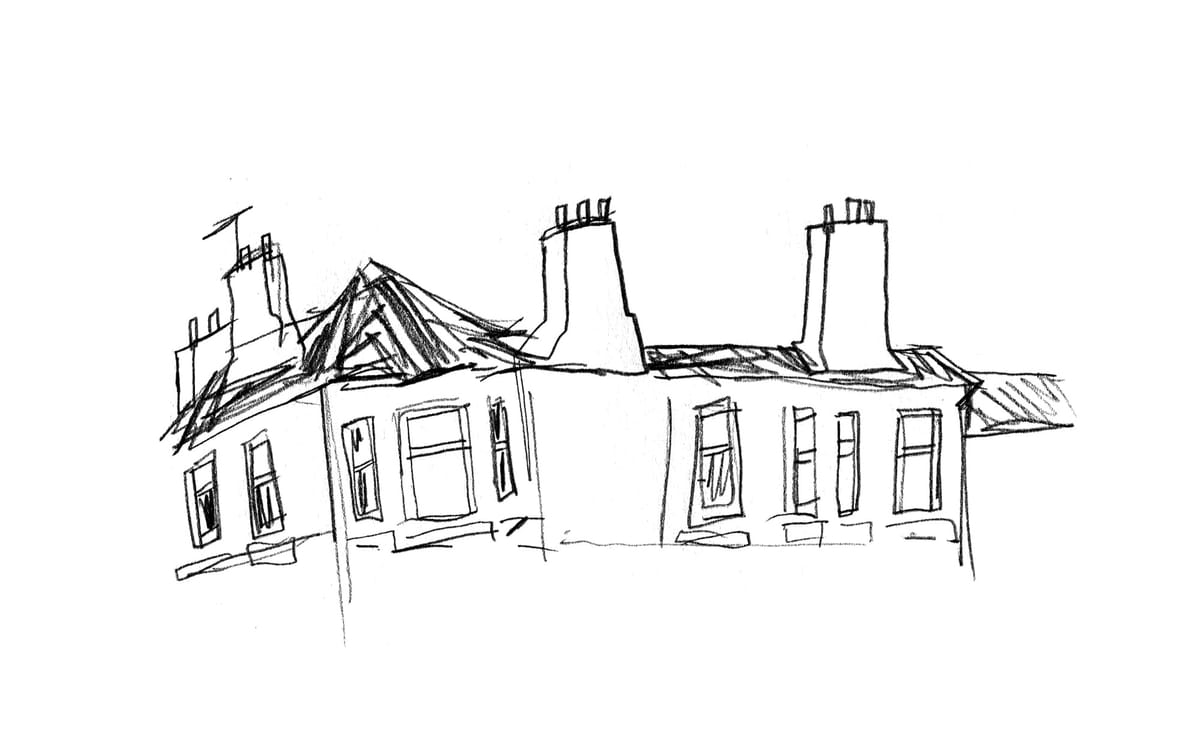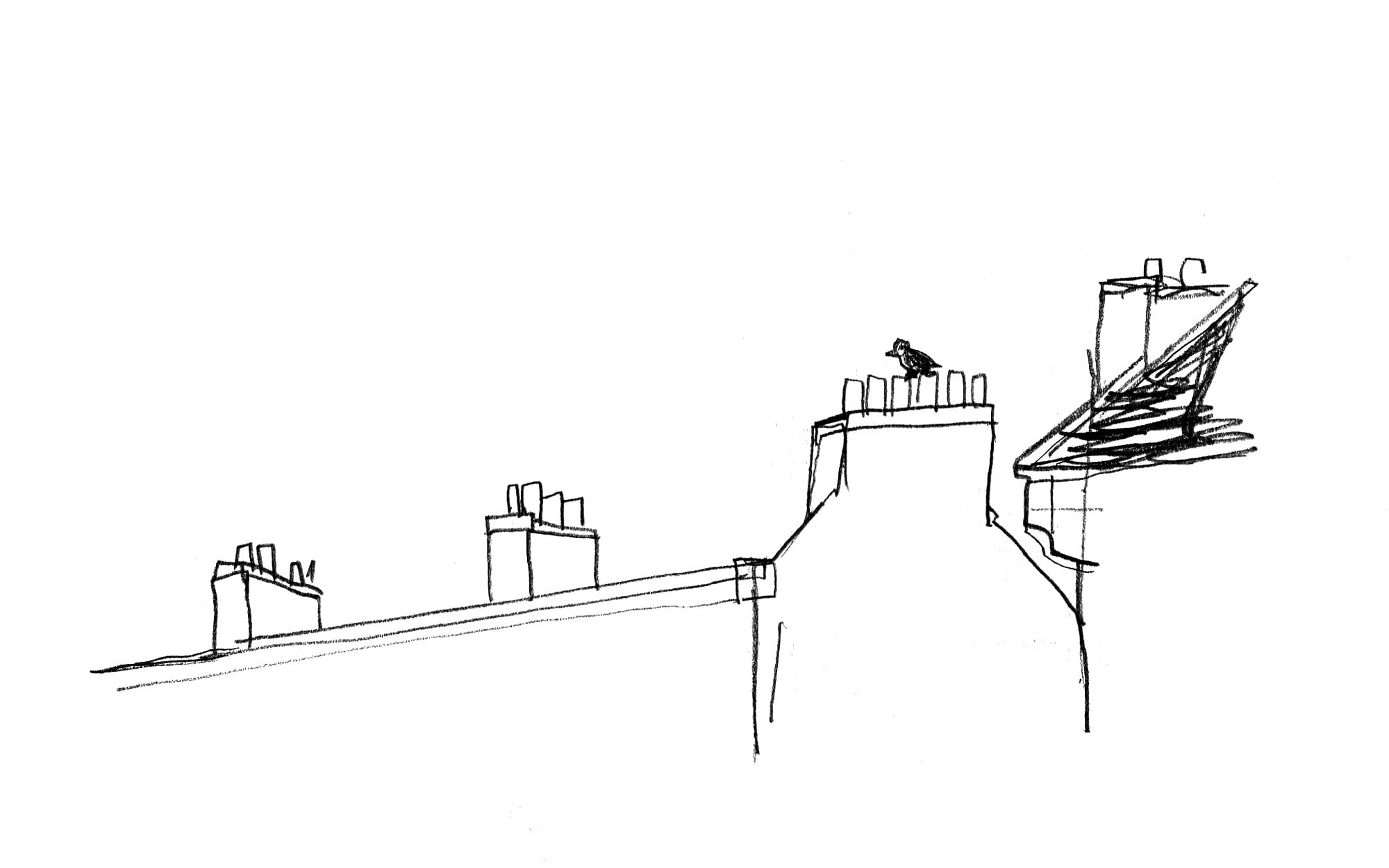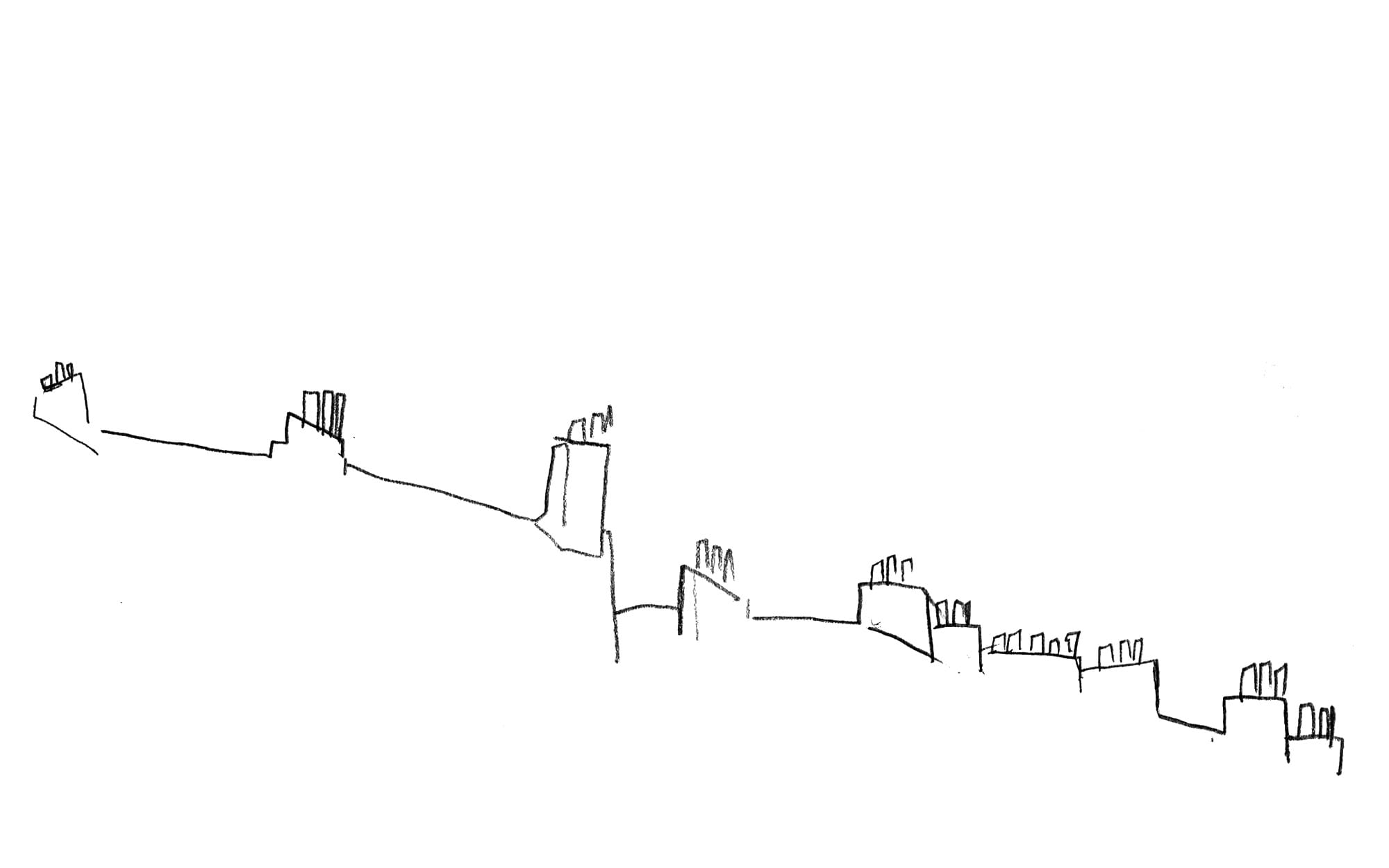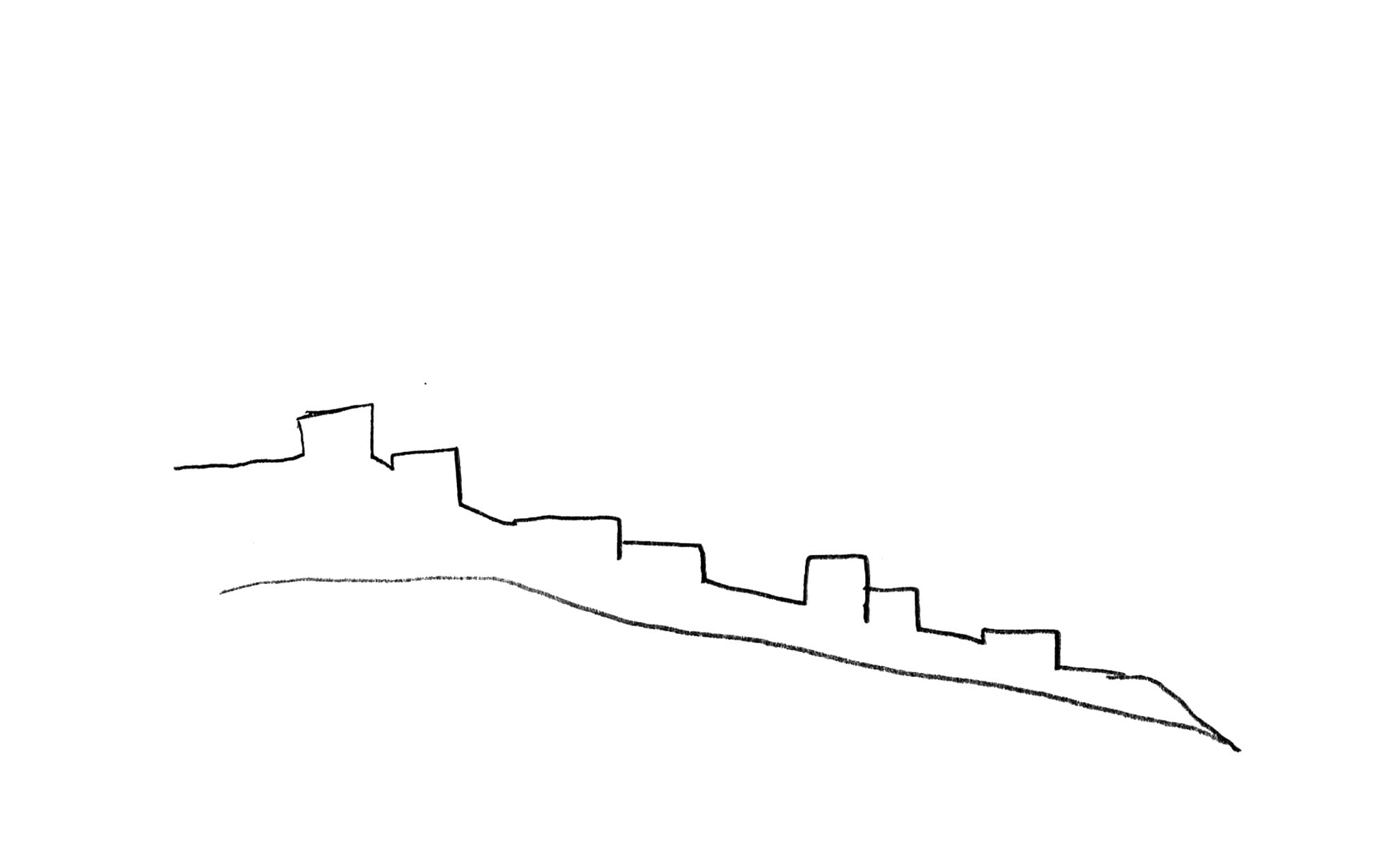Mischiefs by Fire
A post about feeling safe.

I like the word parapet. It is fun to say.
The etymology is Italian: parare (protect) and petto (chest), thus describing a chest-high wall.
Parapets are also fun to draw. As a child, drawing towers and castle walls was so attractive, if technically difficult. I struggled to keep each notch the same size and each line straight. It was frustrating because I could see in my head exactly how a castle wall should look, even and solid, but what I created was usually a mess.

If you imagine a castle, can you see medieval soldiers hiding behind the parapets, ready to fire arrows at intruders? But parapets have another function, less obvious, yet so basic: they stop people from falling off roofs. Parapets are found around the world, in any area with fortified buildings, and are even mentioned in the bible:
Deuteronomy 22:8
(The word parapet only appears in the newer translations, of course).
Later, parapets became important for fire safety in London. People were absolutely sick of the city burning down, and from 1666, traditional flammable building materials such as thatch were banned. In 1707, the Mischiefs by Fire Act (yes, real name!) decreed that wooden roofs had to be surrounded by stone parapets. What I find interesting in all this is to think about what keeps us safe (parapets, apparently?) and how we end up surrounded by things that we just take for granted (parapets, again?).
Feeling safe is, I think, what all humans try to achieve. When Londoners were trying to make their city safer and less flammable, they changed the law - they sacrificed the way things were done in order to have a safer future. Instead of letting anyone build whatever wooden construction they’d like, there was now order, manifested in monotonous streets of houses with little individuality.
Somehow, this works well as a metaphor for my life.

To put it bluntly, I had a rough couple of years during the pandemic - mostly due to grief and my unreasonable and stubborn desire to be an artist, hindered by also needing to pay the rent.
I remember a phone call, maybe a few months after my dad passed away, where, when asked “how I was doing”, I explained that I was doing okay and okay was really all I was aiming for. Okay is enough for now, I said, and I meant it. I suspected and hoped at the time that “really good” would be on the menu again eventually, even if it wasn’t an option then. But in order to get there, I needed predictability, stability and control. I needed to retreat into certainty and okayness for some time, and I knew I wouldn’t get much of a choice as to how long it would take.
And so, I’ve been living in the same city, going to the same places, seeing the same people, even eating the same breakfast every day for quite a while now. For the past three years, I’ve worked the same part-time job that pays enough for me to make rent, allowing me to continue my modest and comfortable existence for which I am very grateful. And this framework has allowed my life to become more than just okay.

Really good is an option again. In abundance, actually, I realise, and mostly in small, sneaky moments which feel silly to list. Off the top of my head, I’ve got: dancing in the kitchen unselfconsciously; most things to do with running; walking home through the park with the sun on my face knowing that it will only get lighter every day from now, until the process reverses, and if I’m lucky I’ll experience that cycle repeating over and over many more times; the fact chocolate exists; that time a couple of weekends ago when I was waiting for the tram with Sarah and our friend Jo and they made me laugh so hard that I couldn’t speak. Then, a rat ran by, and we watched it intently until it disappeared behind a hedge.
The downside of trapping yourself within routine and predictability is that you are trapped within routine and predictability. I’ve not challenged myself or left my comfort zone in a really long time. It’s like I created a nice wooden box for myself to live in, and it was a comfortable fit for a while, but I’ve expanded, grown restless, I’m spilling out the seams. The strange thing is that from the outside, it looks as though nothing has changed - the box hasn’t! - and for a while I thought that meant I was stuck, that I wasn’t changing. But I’m not stuck. It's all nice and good to have gotten to the point where I feel safe enough to appreciate the mundane pleasures of life - but the next step is clear: it’s time to leave the box. My desire to keep changing is finally outweighing my fear of letting go.

This week, while I was writing this post, I found myself looking up all the time, searching for parapets in Edinburgh. Edinburgh has such a distinct look, shaped by the ever-present chimneys on tenement roofs. From when I first moved here, I loved drawing these sequences of stone and slate, decorated with antennas and birds - though I get frustrated, much like I did as a child!
When viewed from a distance, the chimneys on the roofs create the illusion of being castle walls, false battlements stretching out as far as the eye can see. I was walking down Balfour Street towards Leith Walk, surrounded on all sides by the old tenements. None feature parapets, I noted, but they make me feel safe.
For months I’ve been thinking that it’s time to put my head above the parapet, but I am surely past that stage. It’s time for a leap of faith. It’s time to risk bringing the guilt of bloodshed on my house. It’s time to ignore the laws that have governed my life and find some new ones with which to build something more or less fireproof. There will be Mischiefs, I’m sure, but I’m ready.





Comments ()